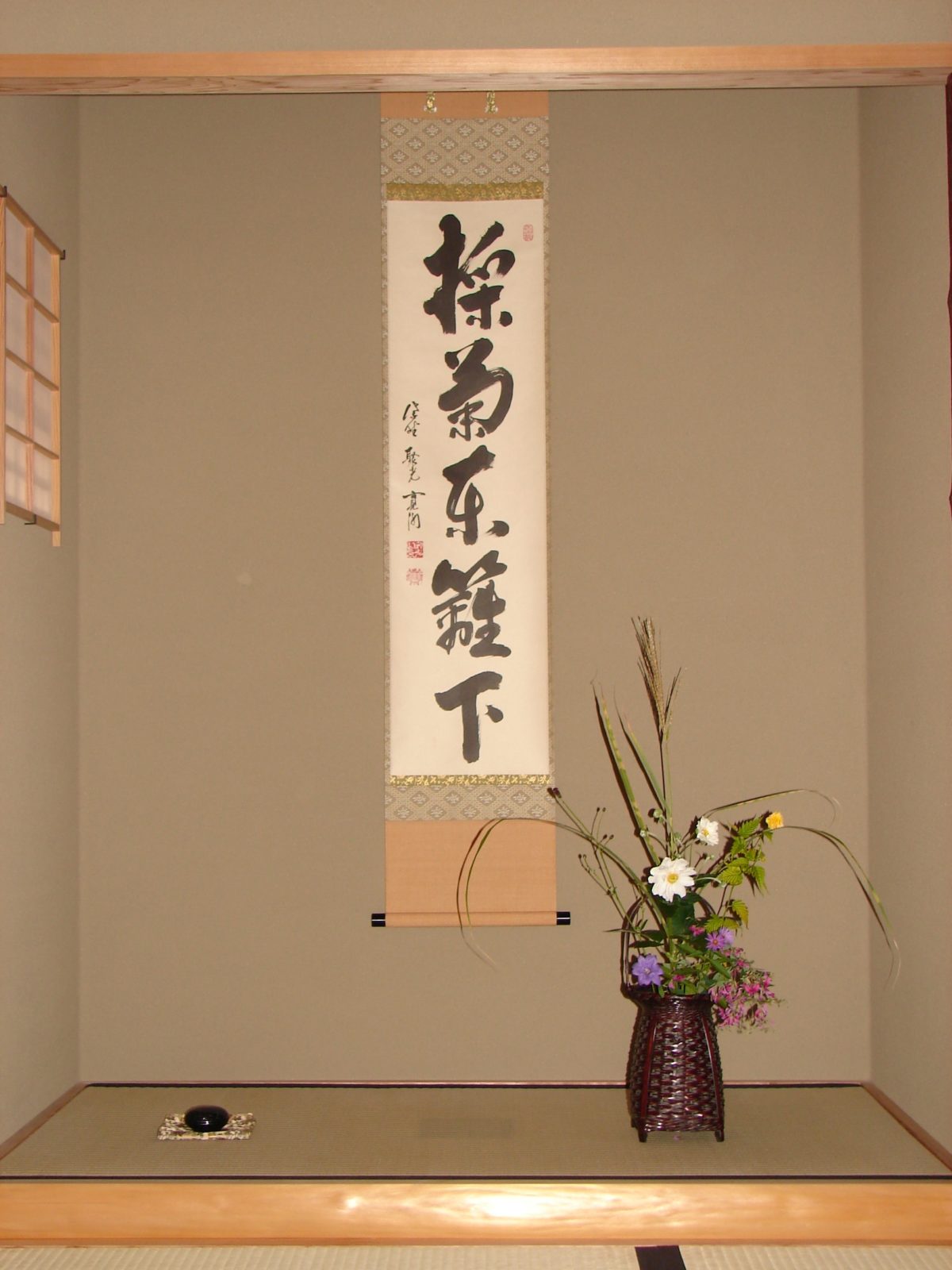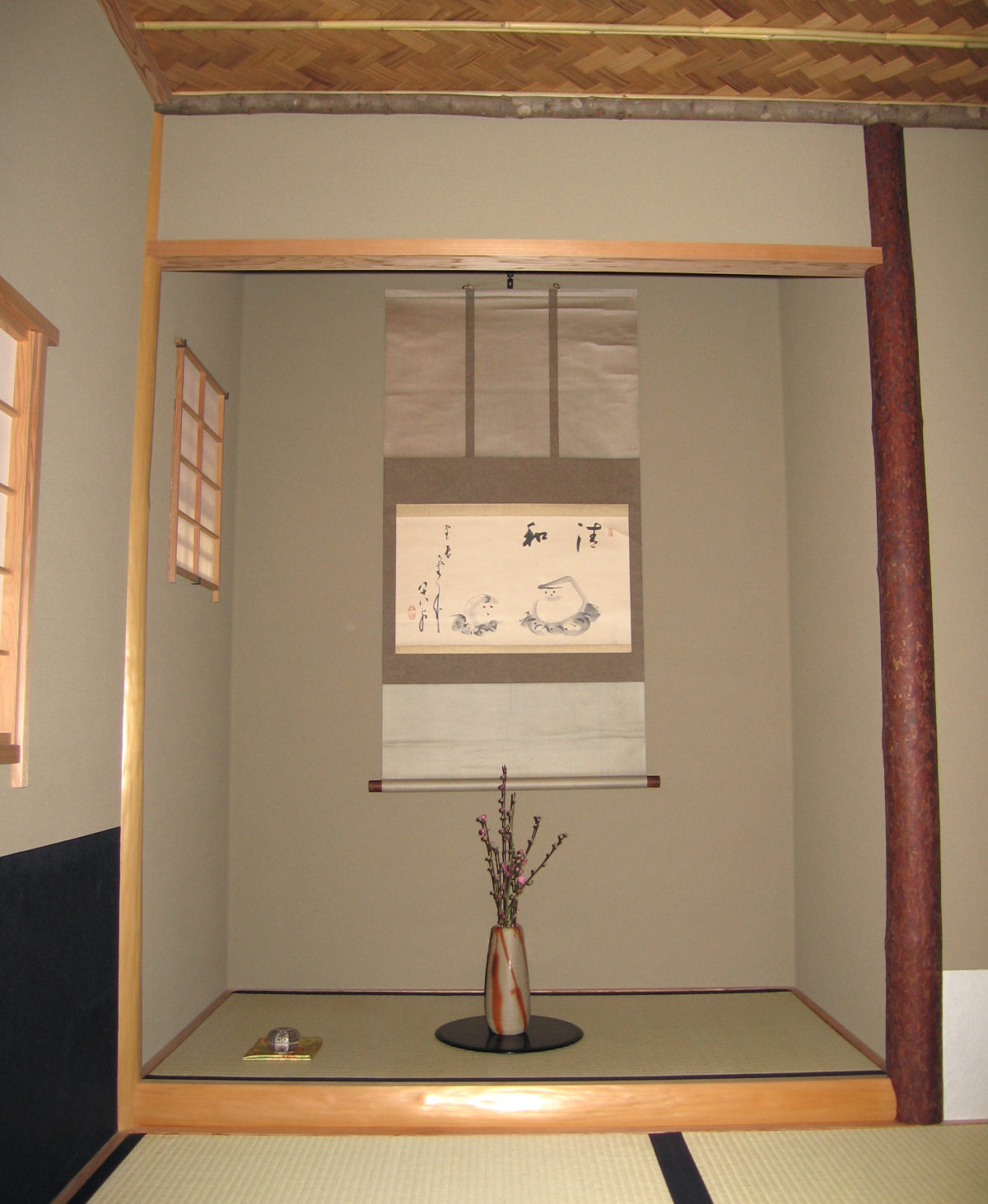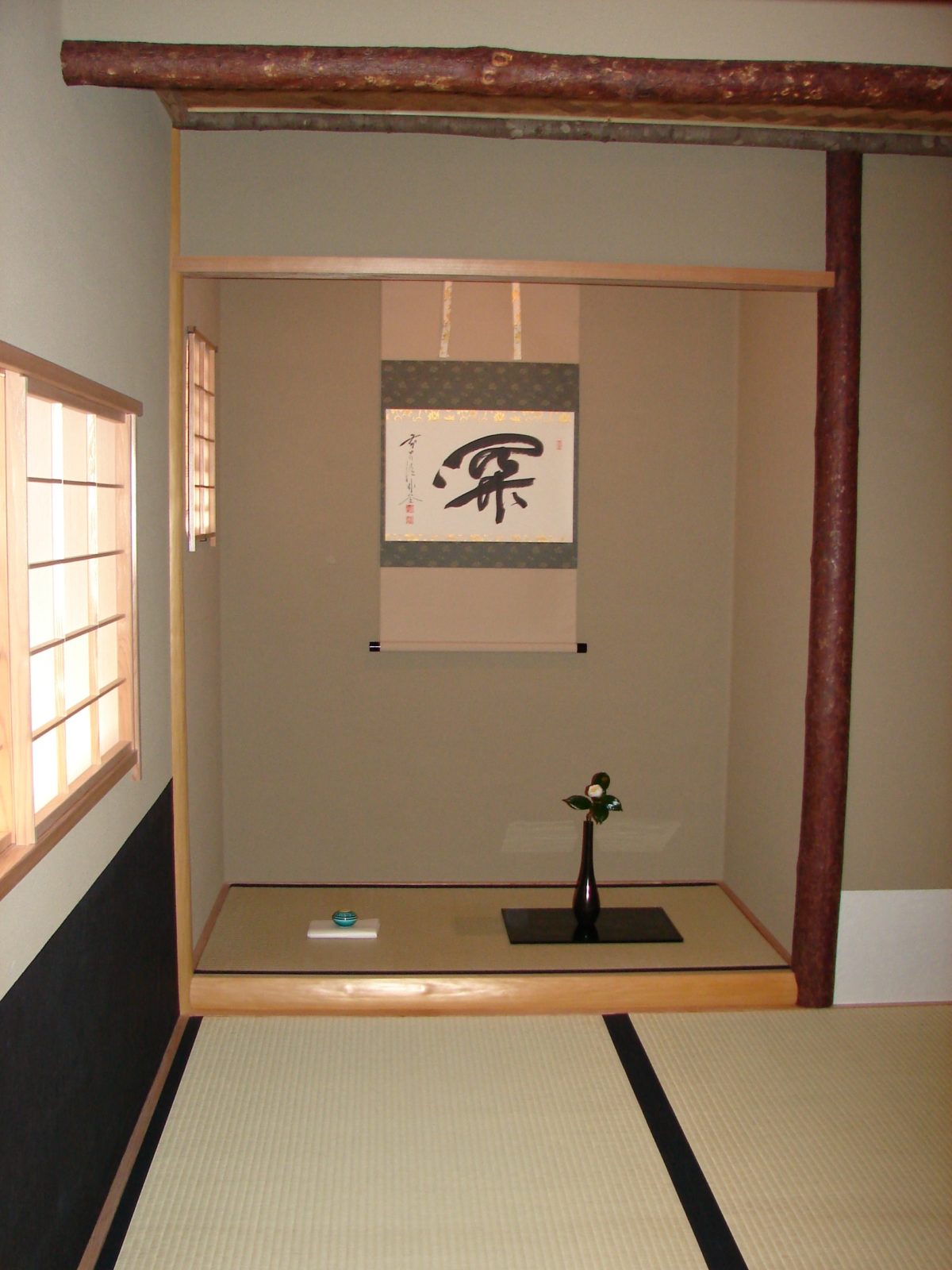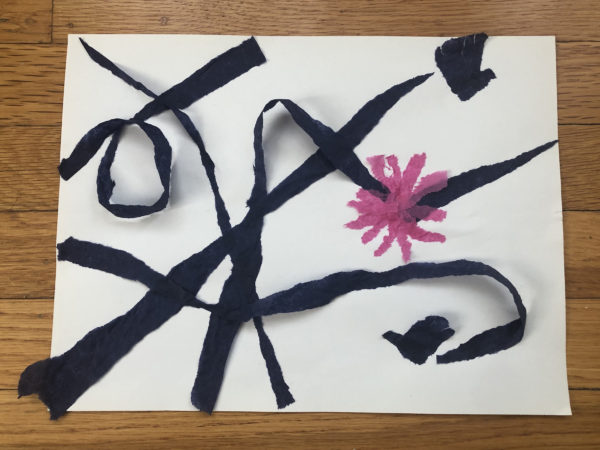Activity
Teahouse Alcove (Tokonoma)
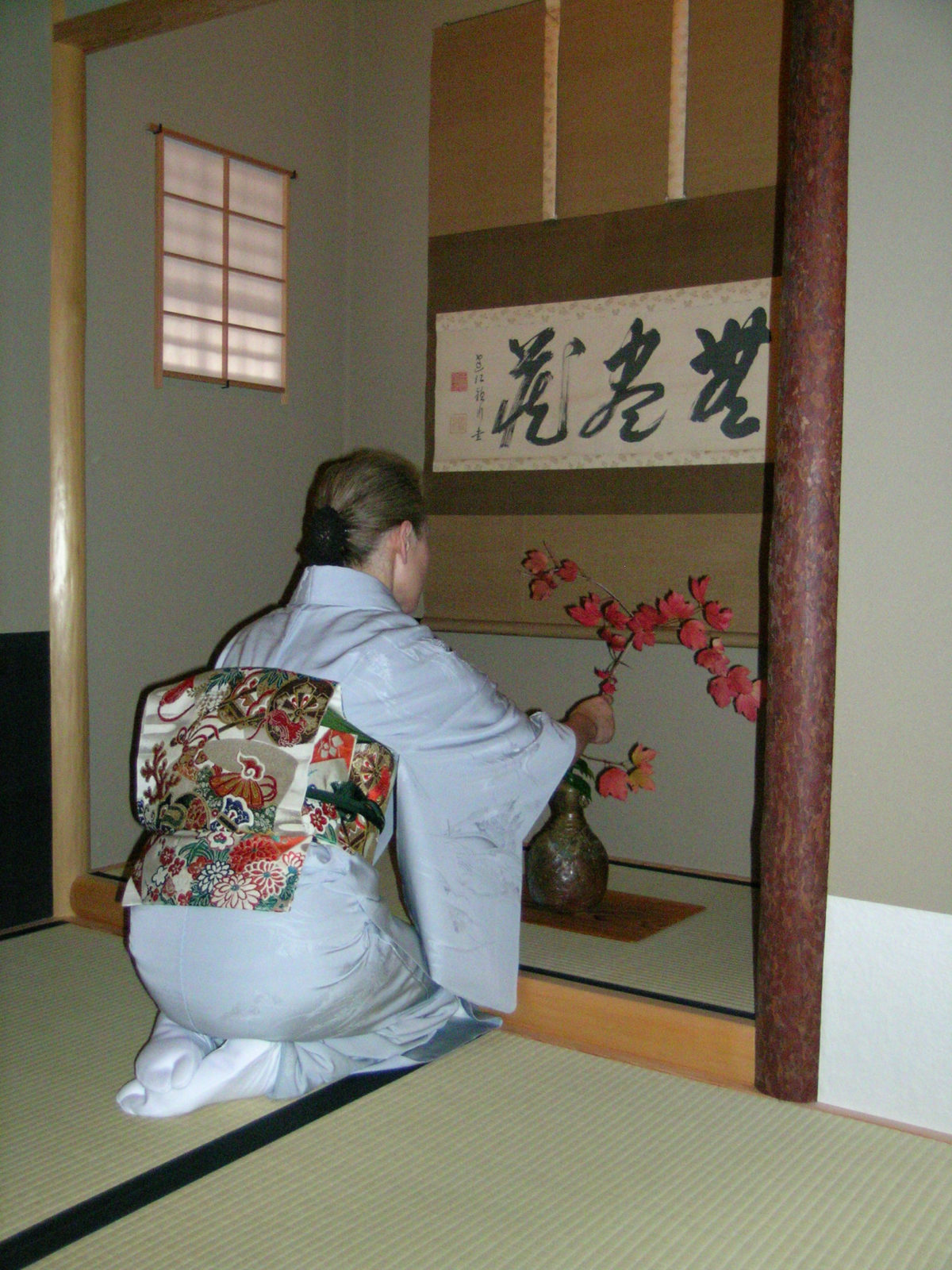
Teahouse Alcove (Tokonoma)
The items in the alcove (Japanese: tokonoma, pronounced “toe-ko-no-ma”) of a traditional Japanese teahouse set the mood and become a conversation point or theme of the tea. Items might include:
- A calligraphy scroll with a poetic or Zen phrase to begin the dialog between host and guests
- Flowers of the season (May–October is “summer,” November–April is “winter”) in a vase made of metal, ceramic, or bamboo
- An incense container
- A writing box, or other special object that is important to the host’s theme
Upon entering the tearoom, guests go directly to view the items in the tokonoma. If a scroll is hanging there, guests bow to acknowledge the person who wrote the scroll. The brushstrokes are thought to express the heart and mind of the calligrapher, and the bow pays respect to them not the object itself. After looking at the other items in the alcove, the guests bow again to the calligrapher and then move to view the fire and any items placed there in preparation for the tea. Finally the guests take their seats by the tokonoma and wait for the host to enter. In a full tea gathering a light meal and wine will precede the serving of sweets and tea. This can take up to four hours. It is also common to attend an abbreviated tea gathering in which only sweets and tea are served. This latter sort is what is presented at the Asian Art Museum in its public tea program.
Guests have many responsibilities in a tea gathering. They must know how to sit properly, how to handle utensils, when to bow, and many other points of etiquette. They take great pains to notice and appreciate the host’s preparations. They are also expected to ask standard questions about the scroll, the tea, the sweet, the bowl, the tea container, and the tea scoop, among other things. Most of all, the guests do their best to act appropriately, with respect and a display of gratitude for all the host’s time and planning.

